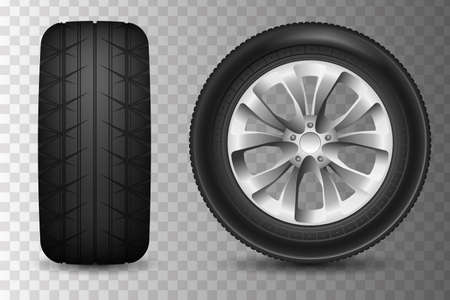1. Why Seasonal Oil Changes Matter
When it comes to taking care of your car, timing is everything—especially when the seasons change. In the U.S., we see big temperature swings from winter to summer, and that can have a real impact on how your engine runs and how well your oil protects those moving parts. Cold weather can make engine oil thicker, so it doesn’t flow as easily to vital components when you start your car on a chilly morning. On the flip side, hot summer temps can thin out oil, reducing its ability to lubricate and protect against wear and tear. That’s why adjusting your oil maintenance routine for winter and summer isn’t just a good idea—it’s essential for keeping your ride running smoothly year-round. Switching to the right type of oil for the season helps maintain engine efficiency, boosts performance, and can even extend the life of your vehicle. So, whether you’re gearing up for icy roads or blazing heat waves, seasonal oil changes keep your engine ready for whatever Mother Nature throws your way.
Choosing the Right Oil for Winter
When winter hits, the drop in temperature can really affect how your engine oil performs. Choosing the right oil viscosity is crucial because cold weather makes oil thicker, which can slow down lubrication and strain your engine during startup. Using an oil with the proper winter rating—usually marked with a “W” for “winter”—helps your engine crank easily, even on freezing mornings.
Why Viscosity Matters in Winter
The lower the first number before the “W” (like 0W-20 or 5W-30), the better your oil will flow at low temperatures. This means your engine gets lubricated faster, reducing wear and tear. Here’s a quick guide to common viscosity grades and their benefits:
| Viscosity Grade | Best For | Winter Performance |
|---|---|---|
| 0W-20 | Modern engines, very cold climates | Excellent cold start protection |
| 5W-30 | Most cars/SUVs, moderate to cold regions | Good balance of flow and protection |
| 10W-30 | Older engines, milder winters | Adequate in above-freezing temps |
Tips for Checking Oil Levels in Cold Weather
- Check when cold: For the most accurate reading, check your oil level before starting the car or at least 10 minutes after shutting it off.
- Look for cloudiness: If your oil looks milky or cloudy, it could mean moisture contamination—common in cold weather—and may require a change.
- Add as needed: Always top up with the same viscosity recommended by your owner’s manual.
Additives That Help in Freezing Temperatures
If you live where winters are harsh, consider oils with specific additives that improve flow and protect against sludge. Look for oils labeled as “synthetic” or those featuring detergents and dispersants designed for extreme conditions. These options help prevent thickening and keep internal engine parts cleaner, ensuring reliable starts and smooth running all season long.

3. Summer Oil Tips and Best Practices
When summer temperatures soar, your car’s engine faces new challenges that require special attention to oil choice and maintenance. Hot weather causes engine oil to thin out more quickly, making it less effective at lubricating vital parts. The heat also speeds up oil breakdown, reducing its ability to protect against wear, sludge, and deposits. That’s why it’s essential to rethink your oil strategy as the seasons change.
Why Heat Changes the Game for Engine Oil
In the summer, your vehicle works harder to stay cool while driving under the sun or in stop-and-go traffic. High ambient temperatures cause engine components to run hotter than usual, which can lead to increased oil oxidation. Thinner or broken-down oil doesn’t provide enough protection, leaving your engine at risk of damage or reduced performance.
What to Look for in Summer Oils
- Viscosity Ratings: Choose an oil with the right viscosity grade for summer, typically a higher number like 10W-30 or 10W-40. This helps ensure the oil stays thick enough to lubricate your engine even when it gets hot.
- Synthetic vs. Conventional: Synthetic oils are often better for summer because they resist breakdown under high heat and maintain stable viscosity longer than conventional oils.
- Additives: Look for oils with detergents and anti-wear additives designed to keep your engine clean and protected from heat-related buildup.
Pro Tips for Summer Oil Maintenance
- Check your oil levels more frequently during the summer months—heat can increase consumption or leaks.
- If you’re planning long road trips or towing heavy loads, consider an early oil change to keep your engine running smoothly.
- Always follow your manufacturer’s recommendations but don’t hesitate to consult a local mechanic if you drive in extreme conditions.
Staying ahead with the right oil changes in summer not only protects your engine but also ensures peak performance no matter how high the mercury climbs.
4. Signs You Need an Oil Change Between Seasons
Keeping up with seasonal oil changes is crucial for your car’s health, but sometimes your vehicle will give you warning signs that it needs fresh oil before the next scheduled service. As temperatures shift from winter to summer or vice versa, your engine can react in ways that signal it’s time for a change. Here’s what to watch for:
Common Symptoms of Oil Trouble
| Symptom | What It Means | Why It Matters Seasonally |
|---|---|---|
| Strange Engine Noises | Your engine is making knocking, ticking, or grinding sounds. | Thicker oil in winter or thinner oil in summer may not lubricate properly as temps change. |
| Oil Warning Light On | The dashboard oil light appears, signaling low oil pressure or quality. | Extreme cold or heat can cause rapid oil breakdown between seasons. |
| Dirty or Dark Oil on Dipstick | Oil looks black and gritty instead of amber and clear. | Seasonal debris and temperature swings cause faster contamination. |
| Reduced Fuel Efficiency | You notice you’re filling up more often than usual. | Poor oil quality makes your engine work harder, especially during seasonal shifts. |
| Exhaust Smoke | Blue or gray smoke coming from the tailpipe. | This could mean old oil isn’t protecting your engine seals as temps change. |
Don’t Ignore These Red Flags!
If you notice any of these symptoms—especially as the seasons change—it’s smart to schedule an oil change sooner rather than later. Quick action helps prevent long-term engine damage and keeps your car performing its best whether you’re facing summer heatwaves or winter chills. Pay attention to your owner’s manual and don’t be afraid to check under the hood if something feels off. Your ride (and your wallet) will thank you!
5. DIY vs. Professional Oil Changes: What Works for You?
When it comes to seasonal oil changes—especially as you prep your car for harsh winters or blazing summers—you’ll want to choose the option that best fits your needs and lifestyle. Here’s a breakdown to help you decide if rolling up your sleeves or booking an appointment with a trusted mechanic is the smarter move.
Time Commitment
DIY: If you’re handy, changing your own oil can be done in about 30-60 minutes, but remember, you’ll need to factor in setup and cleanup time, too.
Professional: Most service centers can get you in and out in under an hour, all while you relax. No mess, no stress.
Cost Considerations
DIY: The main advantage here is saving money on labor. You’ll just pay for oil and a filter, which can add up to $20-$40 depending on your vehicle and oil type.
Professional: Expect to pay $40-$80 for a standard oil change, but this often includes a multi-point inspection that checks other winter- or summer-critical systems like brakes, coolant, and tires.
Safety & Peace of Mind
DIY: Safety is key. Working under your car requires proper equipment and know-how—especially when temperatures are extreme. If you’re not confident, this could be risky.
Professional: Certified mechanics have the tools and expertise to spot early signs of trouble, from worn-out gaskets to leaks caused by temperature swings. Plus, most shops dispose of old oil safely and responsibly.
Which Option Suits Your Seasonal Needs?
If you love getting hands-on and know your way around a wrench, DIY oil changes can save cash—just make sure you’re using the right viscosity oil for the season (thinner for winter, thicker for summer). For everyone else, letting a pro handle it ensures your car is ready for whatever Mother Nature throws your way—and that’s peace of mind worth having when temps hit their extremes.
6. Maintaining Your Engine Year-Round
Keeping your car running smoothly isn’t just about changing the oil once or twice a year—it’s about regular, mindful care that adapts to every season. Here are some easy-to-follow tips to make sure your engine performs its best whether it’s blazing summer or chilly winter.
Check Your Oil Regularly
Don’t just rely on set mileage or time for oil changes. Make it a habit to check your oil at least once a month, especially before long road trips or when the weather shifts dramatically. Pull out the dipstick, wipe it clean, reinsert, and check the level and color. If it looks dark or gritty, or if you’re running low, it’s time for a change.
Pay Attention to Warning Signs
Your car will often let you know if something’s wrong. Watch for dashboard warning lights, odd noises from under the hood, or even a rougher drive than usual. Address these issues promptly—waiting can turn small problems into expensive repairs down the road.
Adjust Maintenance With the Seasons
- Winter: Cold weather thickens oil and makes your engine work harder. Use winter-grade oil recommended by your owner’s manual and start your car gently on those freezing mornings.
- Summer: Heat can break down oil faster, so stick with an oil suited for higher temps and keep an eye on your fluid levels more often during heatwaves.
Other Basic Tips
- Replace your oil filter with every oil change—it keeps debris out of your engine.
- Top off other fluids like coolant and windshield washer fluid as needed.
- Stick to a regular maintenance schedule for things like air filters and tire rotations; these all impact overall performance.
Bottom Line
A little proactive care goes a long way. Stay alert to how your car feels and sounds, follow seasonal recommendations in your owner’s manual, and don’t hesitate to ask a mechanic if you’re unsure. With these simple habits, you’ll keep your engine healthy—and avoid those costly surprises—no matter what the American seasons throw at you.


